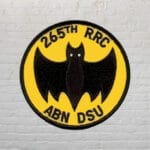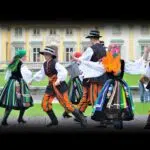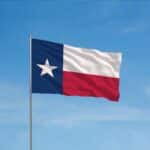Dyngus Day is a Polish and Polish-American celebration on Easter Monday to mark the completion of Lent, and this year, it falls on April 10. The happy tradition includes many festivities including parades. Parties begin mid-morning with a buffet of traditional cuisine and last until after daybreak on Tuesday. Previously, on Easter Monday, the males would shower water on the girls and tap them with pussy willows. The females would do the same to the boys on Tuesday. Nowadays, at current Dyngus Day celebrations, both men and women swap water and pussy willow equally — because it is one of the earliest plants to bloom in the spring, the branches of these plants are the day’s greatest prop.
History of Dyngus Day
Dyngus Day is considered the practice of ‘Smigus Dyngus.’ It dates back to before the Christianization of Poland. It’s recorded in 966 A.D. under the reign of Mieszko I, which should give an insight into how long ago the curious Easter ritual of today has been around for. Of course, given its alleged roots, the practice cannot be linked to the country’s newly discovered Christian faith. Instead, most experts believe it is a synthesis of Slavic tribal rites (similar traditions exist in the Czech Republic and Slovakia) pagan beliefs, and subsequent Christian additions, all of which combine to form a unique blend of Easter celebration of polytheistic ritual.Dyngus Day in Poland coincides with the sharing of symbolic painted eggs (and across much of Europe). It is because the previous pagan celebration was geared toward celebrating the fertility of the new season as well as the hope of a successful harvest later in the year.Dyngus Day is an esoteric nod to the Polish pagan past. Easter time allowed for water rituals making it possible to combine a religious period with folk courtship rites, which were, above all, very practical for Slavic rural communities.Dyngus Day is still celebrated in Poland. While most Poles are aware of the gender division that underpins the old tradition, today’s practice has all but abandoned its commitment to the boy-girl wooing of yore. Dyngus Day, on the other hand, is more of a free-for-all, a public water fight in which town squares come to life with aqua bouts, regardless of the ancient importance they originally carried.
Dyngus Day timeline
Smigus Dyngus predates the Christianization of Poland.
The combination of ‘migus’ and ‘dyngus’ merges into one occasion.
It is an attempt by the city’s Polish-American population to establish a new focus for its identity.
The president is part of a rally in the Dyngus Day procession ending in Indiana.
Dyngus Day FAQs
On Dyngus Day, what do the boys do?
One of the most prevalent rituals is for boys to douse girls with buckets of water, squirt guns, and wet towels. On Easter Monday, the boys would shower water on the girls and tap them with pussy willows.
In Polish, what does ‘Śmigus-Dyngus’ mean?
Monday was rainy, also known as ‘lany poniedziaek’ or ‘wet Monday.’ It is a Polish Easter Monday ritual in which people hurl enormous amounts of water at one another.
Which nations commemorate Dyngus Day?
The custom is extensively linked with Poland and is practiced by Polish Diaspora populations, notably among Polish Americans who refer to it as Dyngus Day.
Dyngus Day Activities
-
Visit Buffalo or New York
Dyngus Day is observed in cities across the United States with substantial Polish-American populations, such as New York and Buffalo. Both host the largest Dyngus Day events that include an expensive procession.
-
Make some Polish cuisine
If you can’t make it to Dyngus Day in New York or Buffalo, bring Dyngus Day to you! Make Polish food to commemorate the occasion. It’s also a good day to experiment with new dishes.
-
Party with friends
Everyone enjoys parties, so why not invite one for your friends to participate in the fun? The more the merrier!
5 Interesting Facts About Dyngus Day
-
The original meaning
The term ‘Dyngus,’ also spelled ‘Dingus’ roughly means ‘good, appropriate, or fitting.’
-
Dyngus Day is a Polish-American holiday
It is observed on Easter Monday, the day following Easter Sunday.
-
One of America’s largest festivals
The biggest celebration is held in Buffalo, New York — America’s Dyngus capital.
-
Love is all around
Young men and women flirt with pussy willows as they are among the first plants to blossom in the spring.
-
Pussy willows are a spring symbol
The folklore states talks of kittens washing up on the river banks years ago, making willows sprout fur buds.
Why We Love Dyngus Day
-
Food is important in these celebrations
There is a wide variety of Polish cuisines to choose from, including Polish hot dogs, custard-filled doughnuts, and pierogi. Try some on this day!
-
It’s filled with celebrations and parties
Vibrant parades and gatherings begin in the mid-morning on Monday and continue until after daybreak on Tuesday. Polka music is typically performed, and it is customary for people who attend to dance at least once.
-
It has a long and illustrious history
For centuries, Dyngus Day has been a favorite. Dyngus Day commemorates the enduring popularity of these Polish traditions over the years.
Dyngus Day dates
| Year | Date | Day |
|---|---|---|
| 2022 | April 18 | Monday |
| 2023 | April 10 | Monday |
| 2024 | April 1 | Monday |
| 2025 | April 21 | Monday |
| 2026 | April 6 | Monday |








































